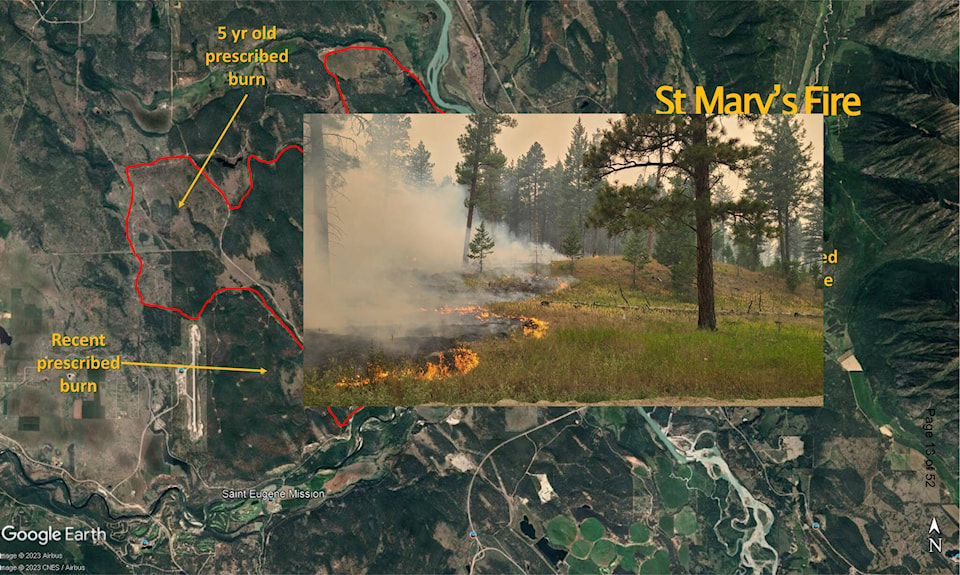A change in the way we think about and respond to massive wildfires has to come, Fire Ecologist Bob Gray told Kimberley Council this week.
Gray has been a consultant on wildfire mitigation for the City of Kimberley for 18 years and is currently working on a fire modelling project across the East Kootenay.
This year, 2.8 million hectares burned across British Columbia and Gray says unless drastic action begins, we are looking at up to three times that amount each summer as we move into mid-century, and the climate warms.
The only way to mitigate that, he says, is to mimic the stewardship practices of Indigenous peoples.
The landscape in pre-colonial times, he said, didn’t support the large fires we see now, and we need to move aggressively on large-scale ecocultural restoration.
Current landscapes, he says, are covered by continuous fuels with very few natural barriers to impede, or slow fire progression.
You have to look at fences and corridors, Gray says. Fences are either man-made or natural and are areas that will slow a fire down. The more fences there are, the slower a fire spreads.
Corridors are where fires naturally tend to move. A lot of modelling has been done to predict where those corridors are.
“Corridors are where fires want to go,” he said. “We need to start to put some things in the way — fences — patches that can slow down fires.”
What is needed is to reconfigure the landscape, less continuous fuels, lots of treatment, like prescribed burns, and changing stand vegetation.
“We need to create conditions to stop fires or slow them down,” Gray said. “When a fire has to flank around an obstacle, we gain time, for a weather change or for fire fighting personnel to get there.”
Fire behaviour changes as it moves through different stand types, encountering natural barriers.
A good example of barriers changing fire behaviour could be seen this past summer in the St. Mary River fire, Gray says.
This fire ran into an old prescribed burn, and a more recent burn, that slowed it considerably. That saved the airport and surrounding homes, he said.
There was still property damage with that fire and Gray says the lesson to be learned is that we haven’t treated enough.
All of this will cost a tremendous amount of money, and a dedication to full-time, continuous mitigation treatments across the province.
The logging industry needs to change as well.
“Right now they harvest where they want. We need to shift that so we are able to direct Canfor and BC Timber Sales to harvest where it is most optimal, not just strictly on economics. We need the industry to be part of the solution, to re-focus how they do things.”
If we are spending a billion dollars in one fire season on suppression, more than that has to be spend on mitigation, he says.
“At the end of the day, it’s a lot cheaper than huge fires.”
READ: More planned forest fires needed: wildfire expert
READ: Prevention, not recovery the key to successful B.C. wildfire season: Ecologist
